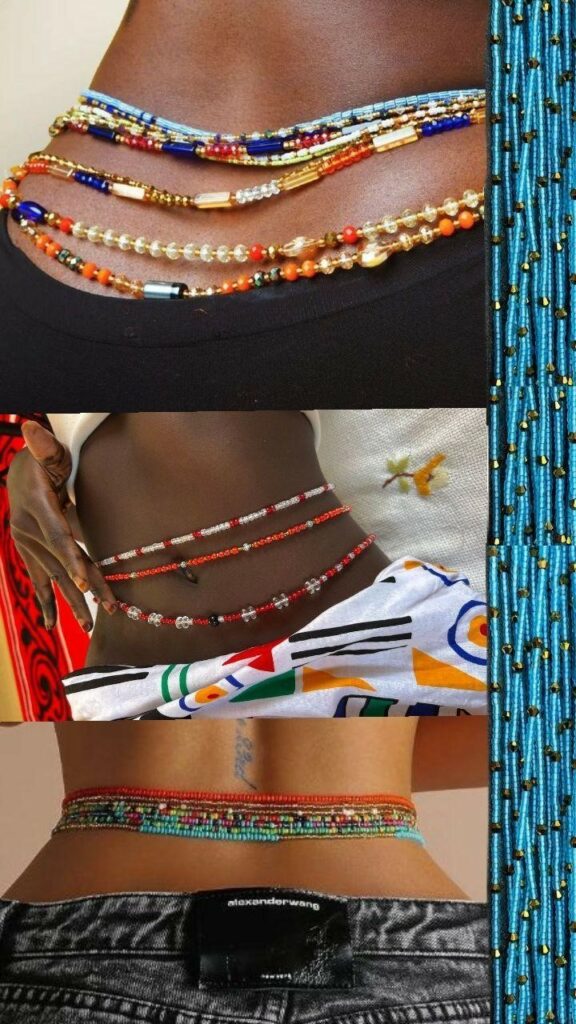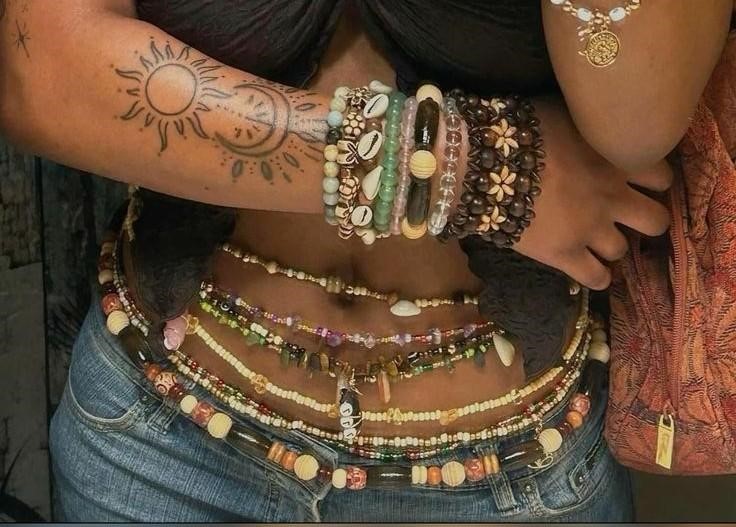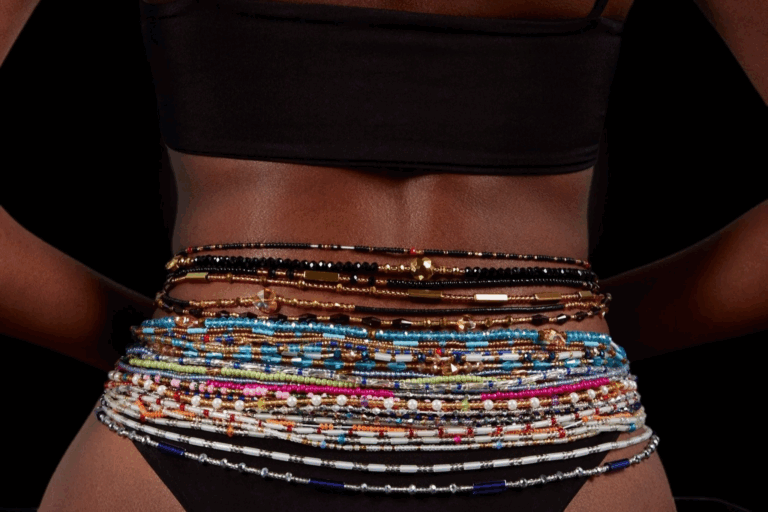Written by Kemi Adedoyin
If you ask ten different Africans what waist beads mean, you’ll likely hear ten different answers. But some common replies are: they’re seductive traps for men, or they’re powerful spiritual charms.
Both are true, and both are painfully incomplete.
The tragedy is not that waist beads are misunderstood. The tragedy is that we’ve allowed them to be flattened into clichés, forgetting that they are some of the most layered cultural texts Africa has ever produced.
Where Waist Beads Come From
Waist beads are not new. Archaeological records show that beads, including waist beads, were part of African societies as far back as the 15th century, particularly in regions like ancient Ghana and Yoruba land. Traders along the trans-Saharan routes moved beads across kingdoms, and over time, beads became deeply symbolic markers of wealth, spirituality, fertility, and femininity.
In West Africa, especially Nigeria, Ghana, and Senegal, waist beads evolved into cultural signifiers where women received them at puberty, wore them at festivals, and adorned themselves with them at marriage. They were never just decoration; they were woven into life’s most significant transitions.

Colors and materials of waist beads were never random. Each strand could carry a significant meaning.
In some traditions, specific stones or crystals were added for spiritual reinforcement. For example, onyx for grounding, turquoise for healing, and coral for wealth.
More than Seduction
Yes, waist beads can be alluring. In some cultures, they were tied during marriage to heighten intimacy, to add rhythm to a woman’s movement, or to mark a private bond between lovers. But to say they are only about seduction is to erase their depth.
Among the Ghanians and Yoruba, waist beads (ileke idi) marked life’s transitions – puberty, fertility, and social status. They were treasured as wealth, beauty, and inheritance. The Igbo used beads in initiation rites, sometimes layering them with spiritual significance.
Seduction was only one note in a symphony of meanings.
More than Spirituality
Another myth we cling to is the idea that waist beads are inherently spiritual. Yes, some were infused with herbs, prayers, and protective charms. Among the Krobo of Ghana, for instance, beads marked a girl’s coming of age, infused with blessings for her future.
But not all beads carried spiritual weight. In many households, they were everyday adornments, tied on infants at birth and replaced as the child grew.
They were sacred sometimes. But they were also ordinary.
Festivals, Rites & Marriages
Waist beads were woven into cultural celebrations. Festivals still showcase women adorned in elaborate beads, waistlines gleaming with colors that signal both beauty and community identity.
In the Igbo culture of Nigeria, waist beads (sometimes combined with other beadwork) form part of traditional marriage adornment. A bride is often dressed in coral and waist beads to symbolize fertility, beauty, and honor to her new family.
Waist Beads and the Female Body
Waist beads were also practical tools of intimacy with one’s own body. Long before the invention of bathroom scales, African women used them as subtle trackers of weight and body changes. A strand growing tight meant weight gain; slackness meant loss.

But beyond tracking, waist beads made the body conscious. They taught posture, movement, and poise. They reminded women of their hips, their waist, their softness, not as flaws to be hidden, but as gifts to be celebrated.
Now that beauty standards are imposed from elsewhere, waist beads remain unapologetically African as they embrace curves, fullness, and presence. They do not shrink the body; they frame it.
Waist Beads as Heritage
Waist beads are often private heirlooms. Mothers gift them to daughters, grandmothers to granddaughters, with blessings stitched into every bead. They are diaries of growth; new strands added at puberty, tighter strands during motherhood, celebratory strands at marriage.
Some are never meant to be seen in public. They remain under clothes, intimate reminders of heritage and womanhood, known only to the wearer. Others are showcased proudly during festivals or dances, where their shimmer tells of lineage and identity.
What We Keep Getting Wrong
We keep trying to force waist beads into one box. Seduction. Spirituality. Fashion. Fetish.
But the truth is that waist beads don’t have a single definition. They are:
- Erotic and sacred
- Fashion and heritage
- Private and public
- Ordinary and extraordinary
The Bigger Conversation
If waist beads spark debate, maybe the real issue is not the beads themselves but how we see our culture.
- Have we stripped waist beads of their meanings, turning them into Instagram trends and fast-fashion trinkets?
- How do we reconcile their heritage with modern reinterpretations when a Krobo girl ties beads at her initiation, and an Instagram influencer wears them as boho chic?
- Do waist beads still carry the same significance in marriages, rites, and festivals today? Or are they shifting into new cultural spaces?
- Can reclaiming waist beads become a deeper act of reclaiming African womanhood itself?

These are not just conversations about jewelry. They are conversations about identity, ownership, and memory.
What we get wrong about African waist beads is that we underestimate them. They are not silent accessories; they are living texts.
To see waist beads glimmer at the waistline is to see Africa herself – impossible to reduce.


